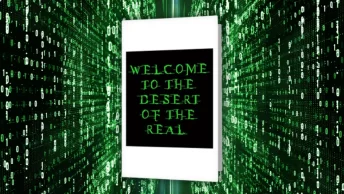Simulacra and Simulation PDF, by Jean Baudrillard, is a philosophical treatise first published in 1981. The book deals with the nature of reality, particularly in the postmodern era, and explores how our perception of reality has been altered by technology. It was originally published by Editions Galilee and is now available from a variety of sources. The book is available in paperback, hardcover and e-book formats.
The book has received strong critical acclaim, with many praising its unique insight into the postmodern era. It has been credited with a number of influential ideas including hyperreality, simulacra and simulation, as well as a significant influence on popular culture. The book has sold over 1 million copies and has been translated into a number of languages.
The Simulacra and Simulation is an important work of philosophy, examining the implications of modern technology on our perception of reality. It offers a unique insight into the postmodern culture and is essential reading for anyone interested in understanding contemporary society.
Table of Contents
Simulacra and Simulation Summary
Simulacra and Simulation is a book by French philosopher and sociologist Jean Baudrillard. The book was first published in 1981, and it explores the idea of simulacra (images, signs or texts that refer to themselves) within society. In this work, Baudrillard argues that modern society has been replaced by a universe of simulations, and that these simulacra have become so pervasive as to eclipse reality.
Baudrillard divides his work into three parts. In the first part, he describes how traditional signs and images in society (e.g., money, flags) have been supplanted by simulacra—images and signs that have no reference to any reality. He argues that the simulacra are so pervasive in our society and culture, they begin to take on a life of their own—they become the reality we experience.
The second part of Simulacra and Simulation focuses on the ways in which simulacra affect our understanding of history, politics, and the world. Baudrillard argues that simulacra have created a distorted ‘hyperreality’, where our understanding of reality has been replaced by images, signs and ideas without real-world reference (e.g., political ideologies).
Details of Simulacra and Simulation Book
| Book | Simulacra and Simulation |
| Author | Jean Baudrillard |
| Original language | French |
| Originally published | 1981 |
| Category | Non-Fiction |
| Publisher | Éditions Galilée |
| Total Pages | 164 |
| Format | PDF, ePub |
Multiple Languages Editions of Simulacra and Simulation Book
Simulacra and Simulation book has been translated into multiple languages and published across the world. The book has been translated into Spanish, Japanese, Korean, Portuguese, Chinese and Russian.
| Book Editions | Check Now |
|---|---|
| English | Check Price |
| French | Check Price |
About the Author
Jean Baudrillard was a French sociologist, philosopher, cultural analyst and literary theorist who was born in Reims, France on July 27th 1929. He studied German language and literature at the Sorbonne before achieving his Doctorate degree in sociology.

Jean Baudrillard was an active part of the “New Philosophers” movement which arose during the late 1960s and early 1970s in France. He was heavily influenced by the works of Marx, Freud, and Nietzsche. His most famous work is Simulacra and Simulation which was published in 1981. In this book, he explores the concepts of postmodernism and simulacra (simulated realities).
Jean Baudrillard also wrote several other books, essays, and lectures on topics such as technology, consumerism, media culture, cultural theory, and hyperreality. He was highly critical of the increasing influence of American-style capitalism on modern culture and argued that it has created a “hyperreal” world where reality itself is simulated and life is lived through imaginary constructs. He was also very critical of what he saw as an artificial world created by consumerism, technology, and media.
Jean Baudrillard passed away in 2007 at the age of 77 due to pulmonary infection. His works have had a major influence on contemporary cultural thinkers, sociologists, and philosophers alike. His ideas about simulacra and simulations continue to be examined and discussed even today.
Simulacra and Simulation PDF Free Download
Click on the download button below to get a pdf file of Simulacra and Simulation book.
Similar Books to Simulacra and Simulation Book
- The System of Objects by Jean Baudrillard
- Postmodernism or the Cultural Logic of Late Capitalism by Fredric Jameson
- Simulations by Paul Virilio
- The War of Art by Steven Pressfield
- The Matrix and Philosophy: Welcome to the Desert of the Real by William Irwin and David Derosa
- Media Theory: An Introduction by James W. Tankard Jr.
- The Imperial Archive: Knowledge and the Fantasy of Empire by Thomas Richards
- Postmodernism, or, The Cultural Logic of Late Capitalism by Fredric Jameson
- The Language of New Media by Lev Manovich
- America Besieged: 9/11, Fear, and the Selling of American Empire by Michael Parenti
- The Virtual Reality Primer by Steve Aukstakalnis
FAQs(Frequently Asked Questions)
What is the book Simulacra and Simulation about?
It is about “the hyperreal”, which is a concept that Jean Baudrillard claims exists in postmodern society.
How long does it take to read Simulacra and Simulation book?
It is a relatively short book, consisting of just ninety-five pages.
What are the main themes of Simulacra and Simulation book?
The main themes of the book are simulacra (symbols or images that stand in for reality) and simulation (the real becoming indistinguishable from the fake).
Who is the target audience of Simulacra and Simulation book?
The target audience for this book includes those interested in postmodern theory, sociology, and cultural studies.
What is the point of Simulacra and Simulation?
Baudrillard argues that the simulacra created by technology have come to replace reality, leading to a world of hyperreality in which it is impossible to distinguish the real from the fake.







